
views
- Rub lotion over the soles of your feet, moving from the heel to the ball of your foot. Focus on the trigger points to relieve tension.
- Stretch your foot by gently pulling your toes toward you. Use the palm of your hand to stroke your foot back and forth and reduce swelling.
- If you can’t reach your feet, roll a tennis ball from your heel to your toes or use an electric foot massager.
Sit down and rest your foot on your knee.

Sitting allows you to reach your foot comfortably without falling over. Sit on a comfortable chair, couch, or bench. You can even sit on the floor, if that’s comfortable for you. Bend one leg and rest your ankle on the opposite knee or thigh, so that you can easily reach your foot. Don’t try to reach your own foot if it causes you a lot of pain. You may need to stick to using a massage tool or ask someone else to massage your foot. Remove your shoes and socks first. It always feels good, especially if you've had a rough day at either school or work.
Rub lotion or oil over your entire foot.
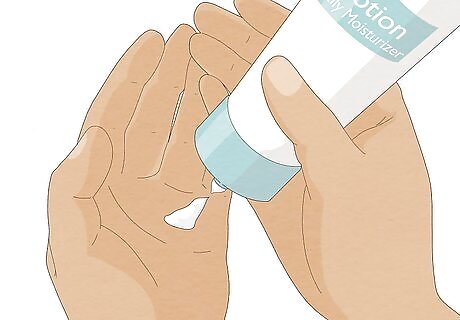
Lotion provides lubrication to help your fingers glide over your foot. Pour a gentle moisturizing lotion or massage oil into your hands and rub them lightly over the whole surface of your foot, making sure to get your toes, arch, and heel. Apply gentle pressure with your fingers as you smooth on the lotion. If you don’t like the feeling of lotion or oil on your feet, use baby powder instead. The power will also reduce friction and leave your feet feeling soft and dry.
Knead your foot with your knuckles for a deep massage.
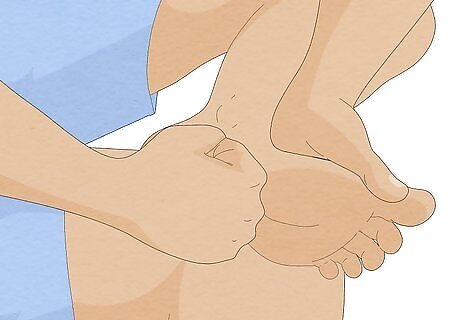
Using the knuckles of the opposite hand allows you to use more pressure. Alternately press and release on the muscles of your foot, as if you were kneading bread dough. Be firm, but don’t press so hard that it hurts. This kneading motion feels especially good on the fleshier parts of your foot, such as the bottom of the heel, the arch, and the ball of the foot.
Rub or press with your thumbs for more targeted pressure.

Use more of a sliding motion instead of pressure. Grab your foot with both hands and slide your thumbs over the top surface, using firm but gentle pressure as you move from your toes to the back of your foot. Then, do the same on the bottom of your foot. You can also move your thumbs in small circles to help soothe knots and sore, tight muscles. It’s easier to pinpoint precise spots on your foot with your thumbs than your knuckles. Give extra attention to any areas that feel especially sore and tight.
Spend extra time on areas where your feet hurt.
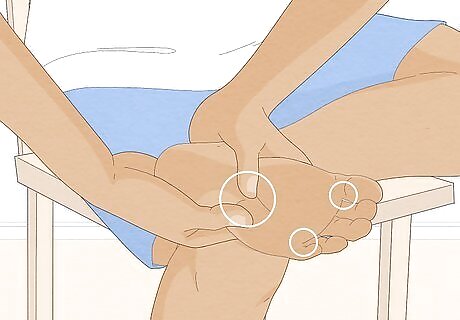
Focus on the arch and other trigger points to relieve pain and tension. The arch of the foot tends to get sore especially easily, since it bears most of your weight. Spend extra time rubbing your thumbs or knuckles over the arch, especially places that feel tight or achey. When you massage the top of your foot, focus on the space between the big toe and the second toe. This is an acupressure point, and pressing or rubbing there may help relieve pain in other parts of the body. If you’re pregnant, avoid putting a lot of pressure on certain trigger points that could stimulate contractions. Points to watch out for include the areas around the ankles and the outer corner of your little toe.
Wiggle or pull your toes gently to massage them.
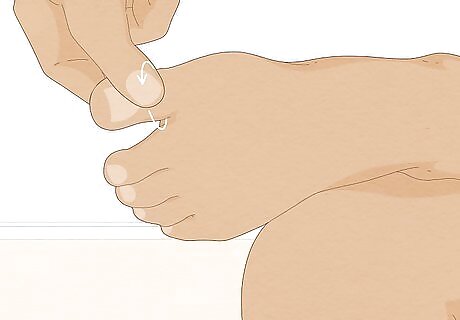
Grab each toe and bend it very gently back and forth or side to side. This will help stretch the muscles around your toes. You can also lightly pull on each toe. Another option is to gently squeeze each toe at the base and then slide your fingers along it to the tip.
Stretch your foot by gently pulling your toes back.
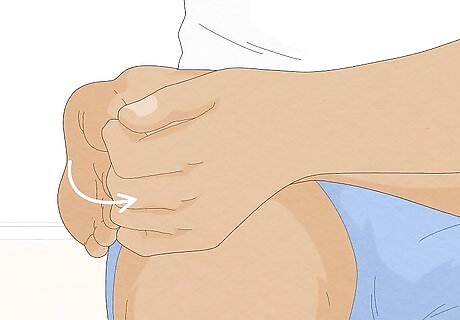
Wrap your hand around your toes and pull them back towards you. This will help stretch the plantar fascia, which are the tissue fibers connecting your toes to your heel. Gentle stretches and massage can help relieve the pain of plantar fasciitis, a common condition caused by inflammation in the plantar fascia.
Stroke up and back lightly to relieve swelling.

Massage can help redirect trapped fluid back towards your heart. To massage a foot that's swollen due to retained fluid, use the flat of your hand instead of your thumbs, knuckles, or fingertips. Lightly stroke back along your foot and stretch the skin as far as it can comfortably go, then release it. You can also gently squeeze your toes and slide your fingers back along them. If your feet are swollen, never stroke downward toward your toes. That will push the extra fluids farther down into your feet.
Do some light foot and ankle stretches.

Stretching can strengthen your feet and improve your range of motion. This may relieve and prevent foot pain. It can also relieve tension in your Achilles tendon and plantar fascia (tissue fibers in the arch of your foot). Try a few of the following stretches: Sit down and slowly rotate each ankle in a circle. Do this about 10 times with each foot. Drop a towel on the floor and move it with your toes. Spell out the alphabet with your toes. Stretch your leg out in front of you and alternate pulling your toes back toward you and pointing them down toward the floor. Sit on the floor and stretch one leg out in front of you. Loop a towel around the ball of your foot and gently pull your foot back towards you while keeping your knee straight. Hold the stretch for about 30 seconds, then switch to the other foot. Set your heels on the floor and alternate flexing your toes downwards and upwards, holding each position for 2-3 seconds. Do this about 5 times.
Roll a tennis ball under your foot for a hands-off massage.
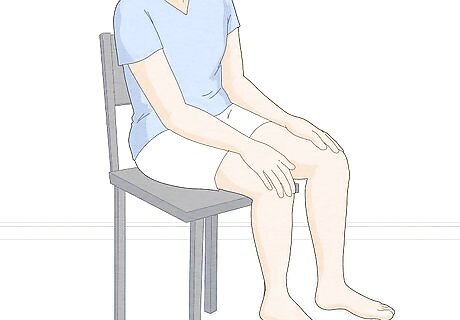
This is a great option if it’s hard for you to reach your feet. Tennis ball massages are also helpful for releasing pain and tension in the arch of your foot. For a light tennis ball massage, sit down on a chair or bench with your feet flat on the floor and roll the ball from your heel to your toes. You can also stand if you prefer more pressure and a more intense massage. If any spots are particularly sore or tense, push down harder to apply a little extra pressure. Focus on your arches if you have plantar fasciitis. You can also use a cylindrical object, like a rolling pin, soup can, or water bottle. Chill the ball to help soothe inflammation.
Try a foot roller or electric massager for targeted relief.
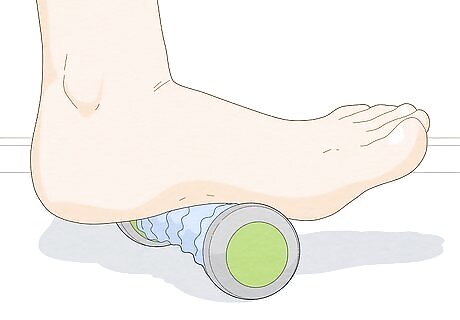
Specially made massage tools can give you a more intense massage. They're also helpful for hitting small trigger points more easily than a ball. Check your pharmacy or look online for foot rollers. Simply place the roller on the floor and roll your feet back and forth on top of it. Most foot rollers have a bumpy or ridged texture. You can get a similar effect with a rolling pin or water bottle, but the massage won’t be as intense. You can also get electric foot massagers, which do all the work of the massage for you. These massagers typically use a combination of vibration, movement, and heat to relieve pain and tension. Don’t use an electric foot massager if you’re diabetic unless your doctor recommends it. Your feet may be more vulnerable to injuries and burns, especially if the massager uses heat.
Stop massaging your feet if it’s painful.
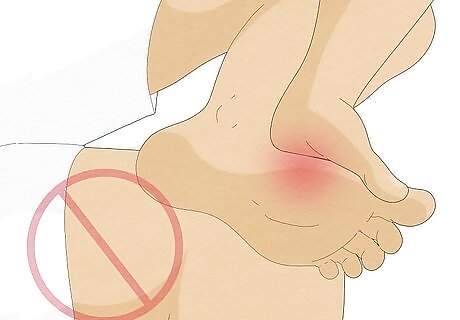
Self-massage shouldn’t hurt. If anything hurts or seems to make your foot pain worse, stop what you’re doing. Talk to your doctor or a physical therapist before trying again. If your doctor advises you not to massage your feet, or if you’re still waiting for medical care, you can use an ice pack or cold compress to get relief from pain and inflammation. Avoid massage if your foot is inflamed, injured, or infected. Ask your doctor before massaging your feet if you a condition like osteoarthritis or vascular conditions that affect your legs and feet, such as peripheral artery disease due to heart disease or diabetes. Be cautious about certain reflex points if you’re pregnant, as some pressure points on your feet may trigger contractions in your uterus. Don’t massage your feet if you have blood clots, as this could cause the clot to break loose.










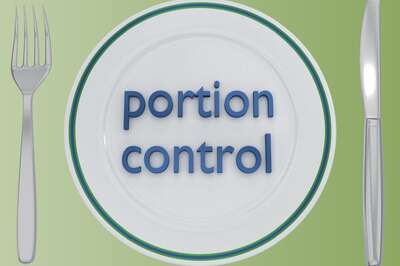
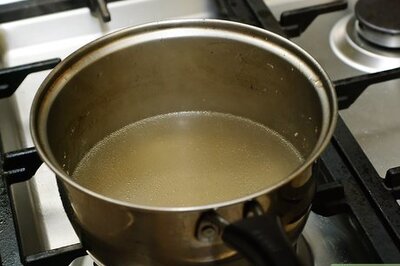




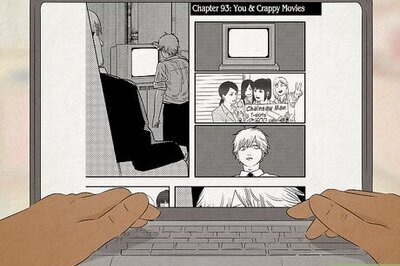


Comments
0 comment